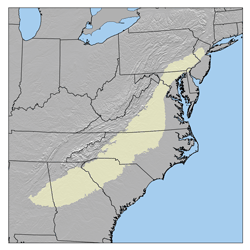I checked off one event on my bucket list, and did it without sore muscles or open wounds, a blessing in itself! I went bicycling down the Virginia Creeper Trail, and wow, what an autumn experience. Note I didn't use the word fall, not a word to use when describing a bicycle trip down the side of a mountain.
That's me with my Florida friend, Sara, who makes a yearly pilgrimage to see the colors the trees bless us with here in western North Carolina. We're at the edge of one of thirty-five bridges along the trail. It was once a train trestle, and therein is the history connection I so love.
In the early 1900's the Virginia-Carolina Railroad was constructed to transport logs from timber operations on the mountainsides to the mills in the lower levels. It was also the life line for local passengers heading out of the hills, and for materials brought to sell in the few stores that cropped up along the path. Because of the steep incline and slow going around curves, the train was forced to creep both up and down the high hills, hence the name Virginia Creeper. Because of economic collapse, the train's last run was March 31, 1977.
I was interested to come upon one of the stops, a station a few miles into the ride. Fortunately for posterity, but not for the storeowner, the general store in the station was left intact, owner walking out and leaving everything as it was that last day in 1977. It is there, as it was that day, a moment in time frozen for us history buffs to view. Unfortunately for today's pilgrims along the trail, however, the CoVid Corona Virus safety guidelines forced the station to be padlocked against germs and pilgrims.
I did hit a lucky streak. I happened upon the station when the forest rangers were checking it out. They refused to allow me to step in, but I stood at the door and took a photograph. For posterity.
Through hard work to accomplish the impossible, volunteers converted this bit of heaven (I'd bet some bit of hell during drastic weather events) from rail to footpath. It is now open for hiking and nonmotorized vehicles. In fact the Appalachian Trail piggybacks for several miles.
Some people chose to hike or bike ride up. Not me. I went down. I crept down is more like it. Never did I have to pedal uphill, although toward the end of the eighteen miles, the trail went through flatlands and I found myself pedaling more and more.
There were too many scenic views to capture along the trip down the mountain, after all, we're talking leaf peeping season.
We came upon a beaver dam complete with sign telling us it was a beaver dam. Otherwise, I would have mistaken it for a log jam.
Thanks to the forward thinking of several visionaries, this trail is now a precious national treasure. Its preservation guarantees this slice of beauty will exist for generations to come. Meanwhile, if you are so inclined, check out Damascus, Virginia and all the varied bicycle rentals. Along with the bicycles, they supply helmets and a bottle of water. They drive clients to a drop-off point at Whitetop Station, a thirty minute van ride away, uphill, and bang, you're off on an unimaginable trip, downhill all the way.
My friend and I went with Blue Blazes, a company recommended by several people who have gone before, but there are many others, believe me. They will close November first, but reopen after the winter in March.
Well worth the thirty-four dollars we spent.
Catch of the day,
Gretchen




























